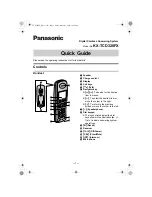
Paper Size
Cassettes and a multi-purpose tray are available for the paper sizes listed in Table
B.2
. The di-
mensional tolerances are 0.7 mm ( 0.0276 inches) for the length and width. The angle at
the corners must be 90° 0.2°.
Table B.2 Paper Sizes for Paper Feeding
Multi-Purpose tray
Size
Cassette or
multi-purpose tray
Size
Monarch
3-7/8 x 7-1/2 inches
Legal
8.5 x 14 inches
Business
4-1/8 x 9-1/2 inches
Letter
8.5 x 11 inches
International DL
11 x 22 cm
ISO A4
210 x 297 mm
International C5
16.2 cm x 22.9 cm
ISO A5
148 x 210 mm
International B5
17.6 x 25 cm
JIS B5
182 x 257 mm
Executive
7-1/4 x 10-1/2 inches
Other sizes of paper can be fed manually.
The minimum size of manually fed paper is 80 x 148
mm (3.1 x 5.8 inches), fed lengthwise. The maximum
size is 216 x 356 mm (8.5 x 14 inches).
Commercial 9
3-7/8 x 8-7/8 inches
Commercial 6-3/4
3-5/8 x 6-1/2 inches
ISO A6
105 x 148 mm
JIS B6
128 x 182 mm
Smoothness
The paper should have a smooth, uncoated surface. Paper with a rough or sandy surface can
cause voids in the printed output. Paper that is too smooth, however, can cause multiple feed-
ing and fogging problems. (Fogging is a gray background effect.)
Basis Weight
Basis weight is the weight of a standard quantity of paper. In the traditional system the stand-
ard quantity is a ream consisting of 500 sheets measuring 17 x 22 inches each. In the metric
system the standard quantity is 1 square meter.
Paper that is too light or too heavy can cause misfeeding, jams, and premature wear of the
printer. Uneven paper weight can cause multiple feeds, print defects, poor toner fusing, blur-
ring, and other print quality problems. The proper weight is 60 to 90 g/m
2
(16 to 24
lbs/ream).
Thickness (Caliper)
Thick paper is referred to as high-caliper paper and thin paper as low-caliper paper. The paper
used with the printer should be neither extremely thick nor extremely thin. If you are having
problems with paper jams, multiple feeds, and faint printing, the paper may be too thin. If you
are having problems with paper jams and blurred printing the paper may be too thick. The
proper thickness is 0.086 to 0.110 mm (3.4 to 4.3 mils).
Moisture Content
Moisture content is defined as the percent ratio of moisture to the dry mass of the paper.
Moisture can affect the paper’s appearance, feedability, curl, electrostatic properties, and
toner fusing characteristics.
±
±
±
B.2. Selecting the Right Paper
B-3
Содержание FS 1700 - B/W Laser Printer
Страница 1: ...r Français r Italiano FS 1700 3700 User s Manual Kyocera Laser Printers Table of Contents ...
Страница 41: ...Sample Status Page Option interface information if installed 3a 3 4 5 6 1 2 2 2 Operating Procedures 2 9 ...
Страница 60: ...Resident Bitmap Fonts 1 3 2 List of Fonts 3 4 ...
Страница 61: ...Resident Bitmap Fonts 2 3 2 List of Fonts 3 5 ...
Страница 62: ...Resident Bitmap Fonts 3 3 2 List of Fonts 3 6 ...
Страница 63: ...Resident Scalable Fonts 1 3 2 List of Fonts 3 7 ...
Страница 64: ...Resident Scalable Fonts 2 3 2 List of Fonts 3 8 ...
Страница 65: ...Resident Scalable Fonts 3 3 2 List of Fonts 3 9 ...
Страница 66: ...KPDL Fonts 3 2 List of Fonts 3 10 ...
















































